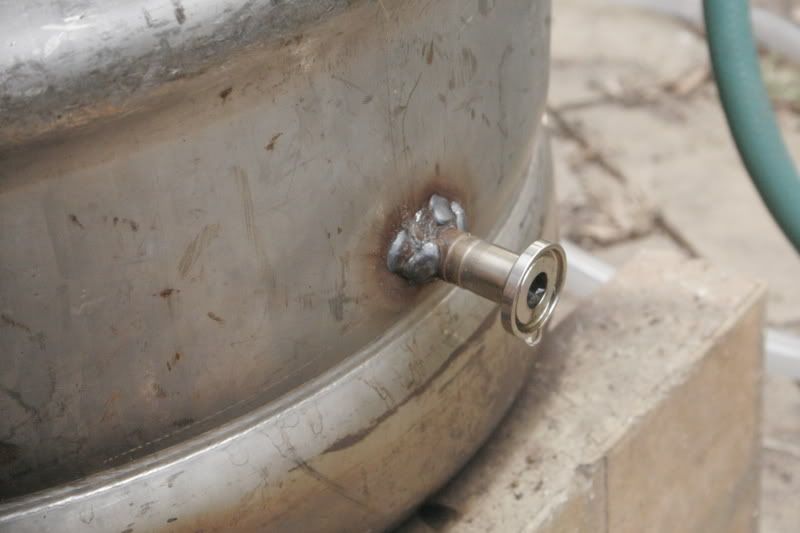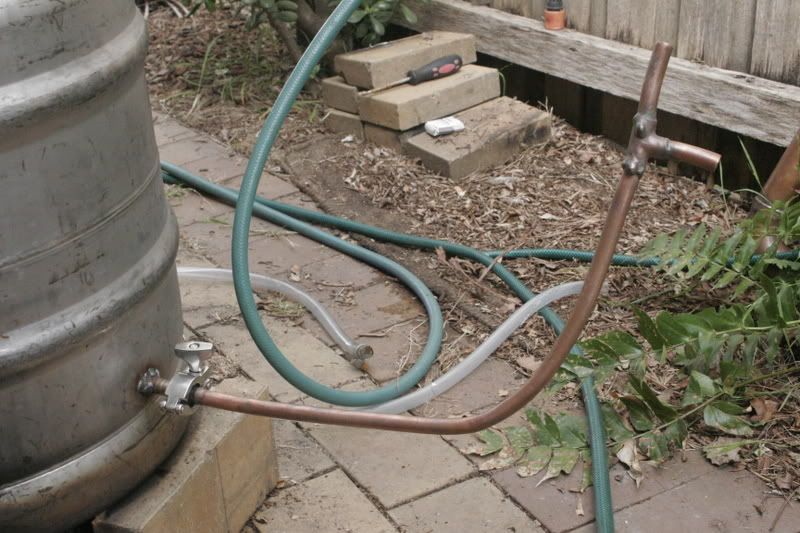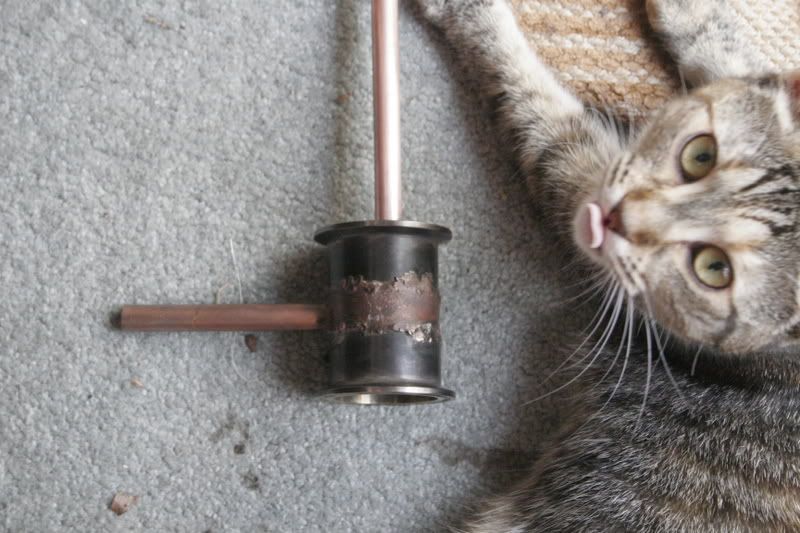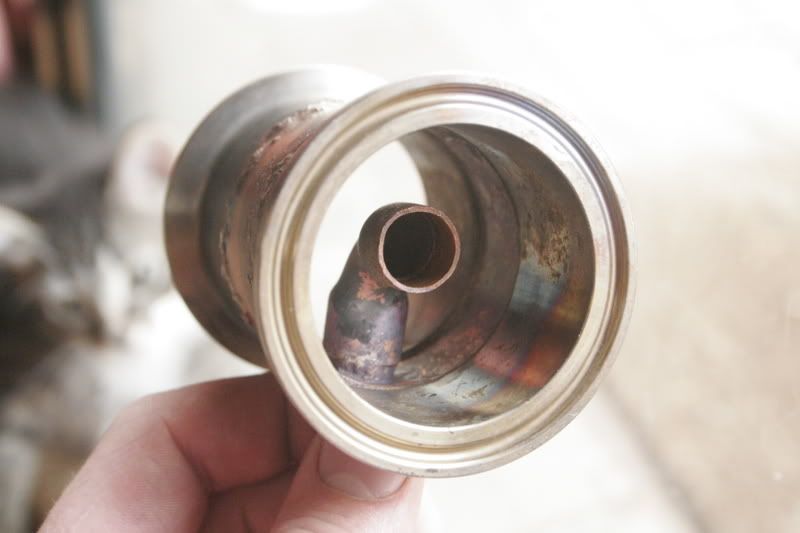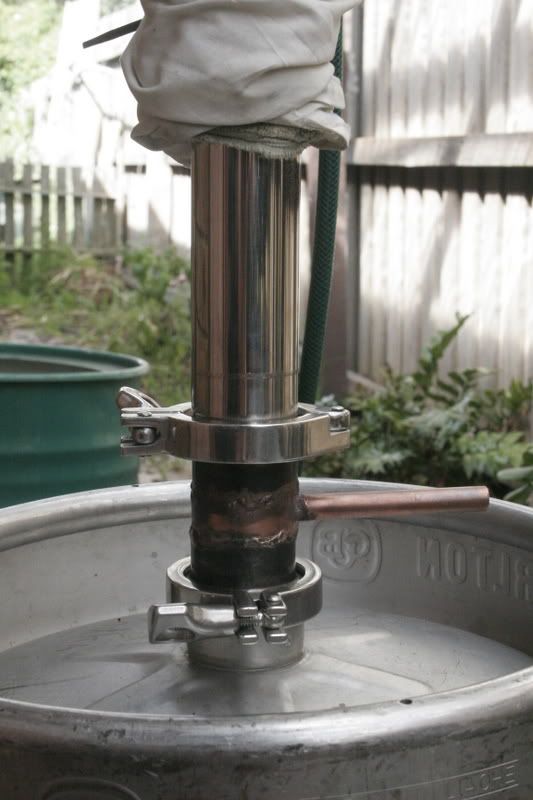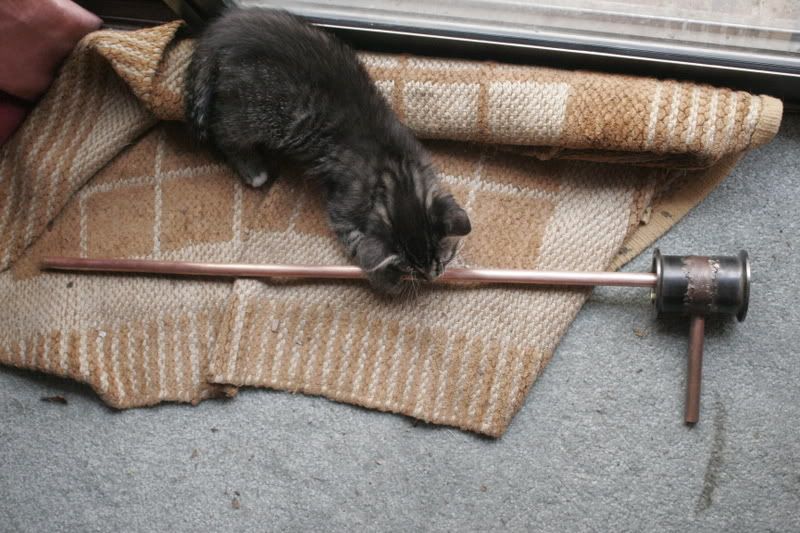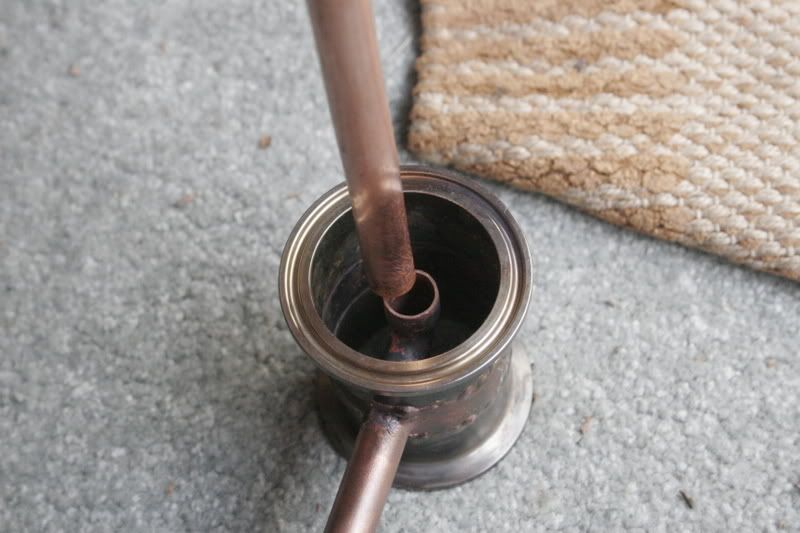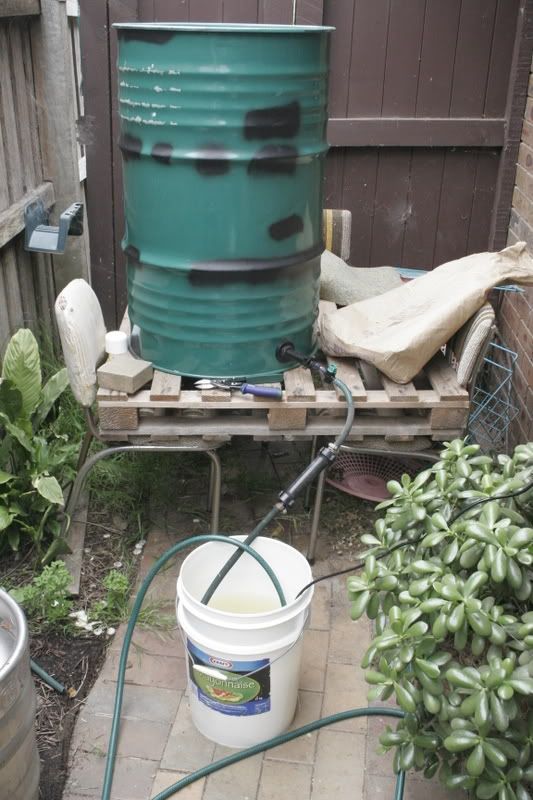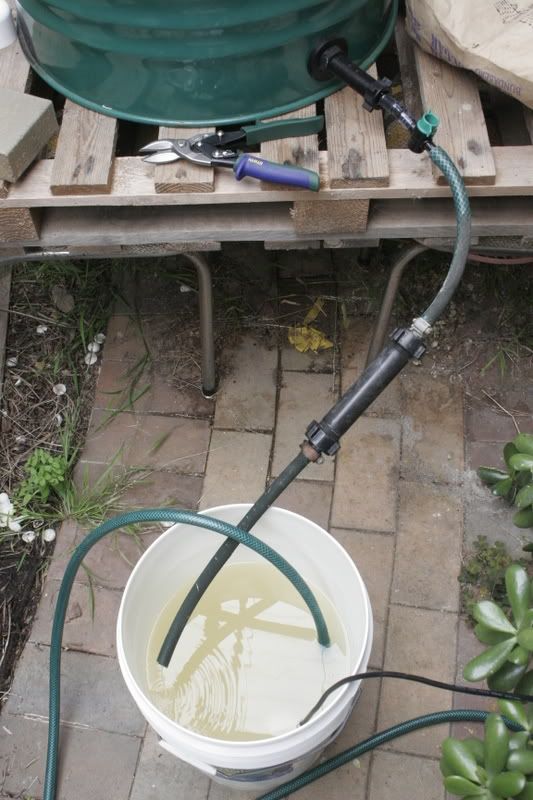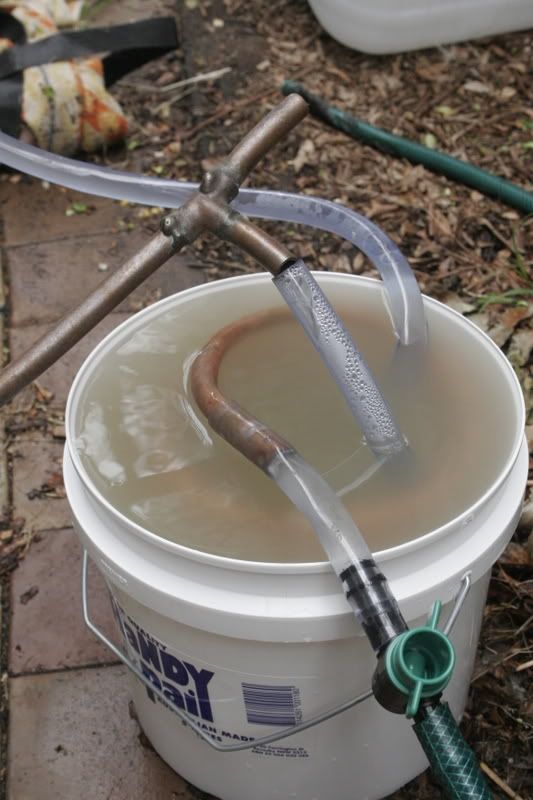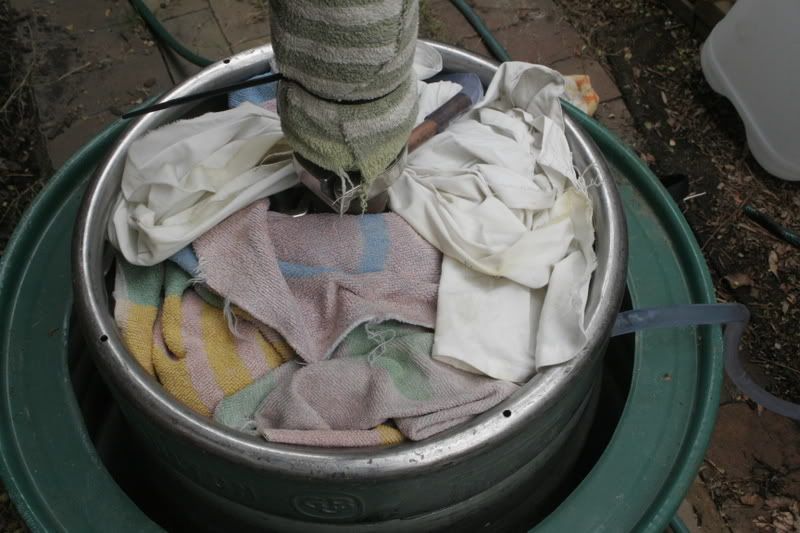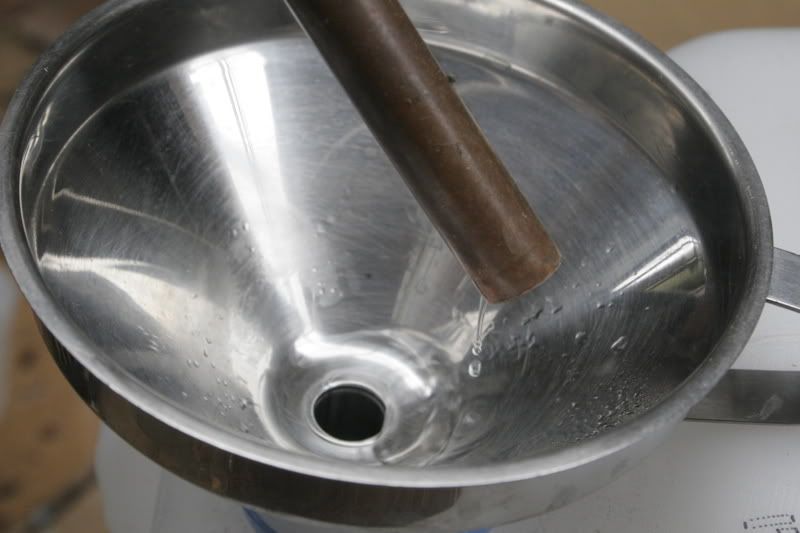Hi,
first of all I am very happy that I am in.
Absinthe , sorry for not considering all information that you wrote. I was simply too enthusiastic to take care of everything.
I am somehow "ellectrically oriented" and alway tried to avoid any gas heating (ellectricity is easier to control). Moreover I have alway been distilling with quite low capacity (10 - 12 l/h of mash) so ellectrical heating was still good enough.
I attach the sketch of my first plant which I built approx 20 years ago. This time I would do it in a slightly different way, but I send it anyway as it seems to be a good an simple example of continuously operated column.
The most probably some of you do it already, however let me explain how it works just to encourage new in the bussines and perhaps start the disscussion about details that could be improved.
You can find it there:
http://i275.photobucket.com/albums/jj31 ... olumn1.gif" onclick="window.open(this.href);return false;" rel="nofollow
1. Hydraulics - what comes in comes out.
The overflow is the best solution to keep a constant level in a boiler. It is fully automatic and trouble free. This works so well that you don't need to keep the mash flow at precisely constant level. What comes in comes out - when you stop feeding the column it will stop do discharge, and it will take some time until the boiler runs dry.
The only thing to remember is that despite the plant is opened to the atmosphere (it must be!) there is a slight overpressure inside. Therefore the liquid level in the boiler is lower than the level of the overflow. If you heat up the boiler using an external heating source, eg. gas or hot plate you don't need to bother to much. When you use an internal electrical heating element you must take care to keep the liquid level so to cover your heating element all the time. If not - you will strart to burn the mash and sooner or later your heating element brakes.
2. Heat balance - get as much as you can.
The goal of the mash preheating is rather the heat recovery than anything else.
When you are using gas and don't bother with the energy consumption this is not a big deal however what you still get in return is the spent wash much cooler and much easier to handle.
3. Mass ballance - miracles of ethanol-water equilibrium.
If someone is familiar with the water-ethanol equilibrium curve he can easily see that it takes only very few steps to get the spent wash with an alcohol content which is really negligible. As this is practically unmeasurable using common methods and equipment I did once an experiment (I was also somehow sceptic about it). I collected several litres of spent wash and made a quantitative distillation in a glasware system. The distillate was concentrated enough to measure the concentration using a hydrometer - the result was (after the recalculation) the 0,1% in spent wash. Even the method was not very accurate - who cares about 0,1 or 0,2%.
The conclusion is that you don't have to be afraid about the alcohol losses in spent wash even if you pump the mash directly into the boiler (alternative A at the sketch).
However if you would like to make a second strip run using as a feed what you got from the first strip than I would recommend to feed the column somwhere in the middle of its height (alternative B on the sketch).
If not satisfied with amount of alcohol which you loose this way -you may collect what comes out from the boiler and keep it for the next time.
4. Strenght of distillate - no roses without thorns.
As you run the still all the time having almost nothing in a boiler you have to compensate it with a higher reflux (when you do it with the same column). The best way to overcome this is again to add a stripping section to your column and connect the feeding pipe just above it.
There is however one thing that affects the performance of the column when run continuously - that is CO2.
When you operate your still in a batch way you get rid of CO2 almost completely at the preheating stage.
When run continuously you put a substantial amount of CO2 all the time with a mash (it is always there). The CO2 presence decreases the heat and mass transfer coefficients and makes you column performig worse.
Sorry guys for making a bit too long speach but this is my bad habit as I used to work as a teacher in university and this usually takes 45 minutes in one go.
Now I have to go to my own work bu will be back soon.
